Jeep Compass vs VW Tayron – Differences & prices compared
Compare performance, boot space, consumption and price in one view.
Find out now: which car is the better choice for you – Jeep Compass or VW Tayron?
The Jeep Compass (SUV) comes with a Petrol MHEV, Plugin Hybrid or Electric engine and Automatic transmission. In comparison, the VW Tayron (SUV) features a Petrol MHEV, Plugin Hybrid, Diesel or Petrol engine with Automatic transmission.
When it comes to boot capacity, the Jeep Compass offers 550 L, while the VW Tayron provides 885 L – depending on how much space you need. If you’re looking for more power, decide whether the 240 HP of the Jeep Compass or the 272 HP of the VW Tayron suits your needs better.
In terms of consumption, the values are 17.50 kWh2 L per 100 km for the Jeep Compass, and 0.40 L for the VW Tayron.
Price-wise, the Jeep Compass starts at 34200 £, while the VW Tayron is available from 39000 £. Compare all the details and find out which model fits your lifestyle best!
When comparing the Jeep Compass and VW Tayron, both SUVs offer distinct advantages tailored to different driving preferences. The Jeep Compass is renowned for its rugged build and off-road capabilities, catering to those who seek adventure beyond the pavement. On the other hand, the VW Tayron captivates with its sleek design and sophisticated technology, providing a more refined driving experience ideal for urban environments.
Jeep Compass
The Jeep Compass combines a rugged aesthetic with modern sophistication, making it a standout choice in the compact SUV segment. Its robust design is complemented by a comfortable interior that offers ample space and cutting-edge technology for a seamless driving experience. Whether tackling urban environments or venturing off-road, the Compass provides versatility and reliability, embodying the adventurous spirit synonymous with the Jeep brand.
details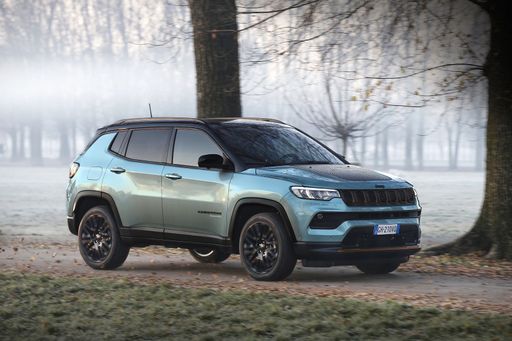 @ media.stellantis.com
@ media.stellantis.com
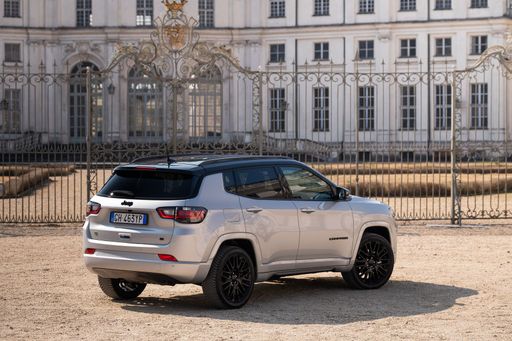 @ media.stellantis.com
@ media.stellantis.com
 @ media.stellantis.com
@ media.stellantis.com
 @ media.stellantis.com
@ media.stellantis.com
 @ media.stellantis.com
@ media.stellantis.com
VW Tayron
The Tayron stands out as a stylish and versatile SUV that expertly blends form and function. With its spacious interior and modern design, it caters to families and adventure seekers alike, making every journey enjoyable. Equipped with advanced technology and safety features, the Tayron promises a driving experience that is both secure and exhilarating.
details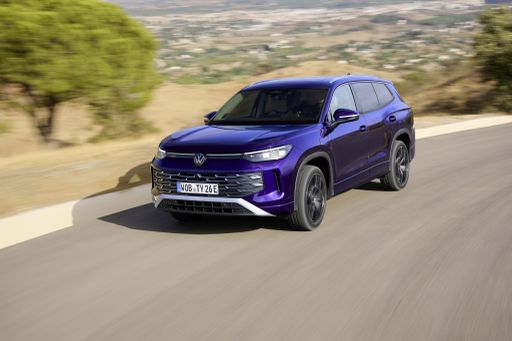 @ volkswagen-newsroom.com
@ volkswagen-newsroom.com
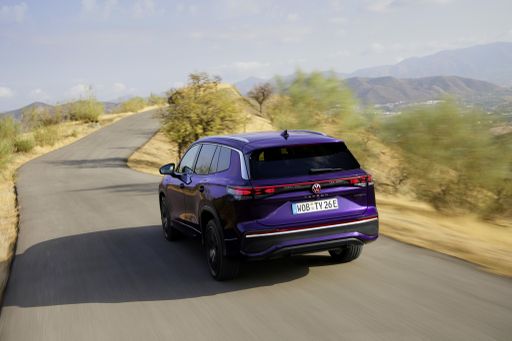 @ volkswagen-newsroom.com
@ volkswagen-newsroom.com
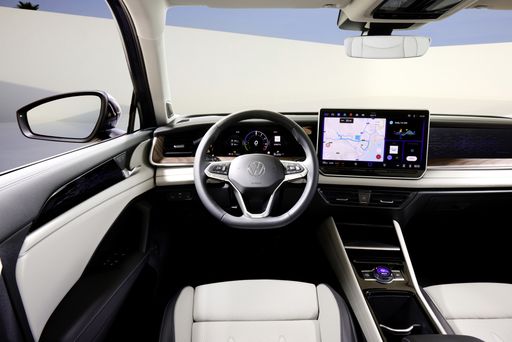 @ volkswagen-newsroom.com
@ volkswagen-newsroom.com
 @ volkswagen-newsroom.com
@ volkswagen-newsroom.com
Battle of the SUVs: Jeep Compass vs. VW Tayron
The automotive landscape is crowded with SUVs, each vying for the attention of adventure-seekers and daily commuters alike. The Jeep Compass and VW Tayron stand out as contenders in this competitive field. Both vehicles offer unique strengths, appealing to different types of drivers. Dive in as we explore these two models in detail, comparing technical aspects, innovations, and performance.
Power and Performance
The Jeep Compass, model year 2024, brings a fair amount of power to the table. It offers a range of power outputs: 130, 190, and 240 HP, all channeled through either a front-wheel drive or an all-wheel drive system. Its acceleration varies from 10.3 to 7.3 seconds for the 0-100 km/h sprint, depending on the configuration.
Matching up against the Compass is the VW Tayron, model year 2025, with a more extensive range of engine options. Power outputs for the Tayron span from 150 to a robust 272 HP. The Tayron's most powerful variant achieves 0-100 km/h in just 6.1 seconds. Both SUVs employ an automatic transmission, but the Tayron exclusively features a dual-clutch automatic system.
Efficiency and Range
Efficiency plays a crucial role for consumers, especially those concerned about environmental impact. The Jeep Compass offers fuel consumption figures between 5.5 and 2 L/100 km, reflecting its hybrid technology prowess. Its CO2 emissions range from 123 to 48 g/km, and the plug-in hybrid version provides an electric range of 36 km.
On the other hand, the VW Tayron showcases its superiority in plug-in hybrid technology with an impressive electric range reaching up to 126 km. Fuel consumption figures start at 0.4 L/100 km for the hybrid versions but can reach up to 7.8 L/100 km in its more conventional powertrains. CO2 emissions range from a mere 9 g/km, showcasing its commendable efficiency class ratings.
Dimensions and Practicality
In terms of size, the VW Tayron is larger, with a length of 4792 mm compared to the Compass's 4404 mm. This translates to more interior space and a significantly larger trunk capacity of up to 885 liters, dwarfing the Compass's maximum of 438 liters. While both vehicles comfortably seat five passengers, the Tayron’s extra dimensions make it a better choice for those needing extra storage without sacrificing passenger space.
Technological Innovations
Both SUVs offer advanced technologies enhancing safety and driving enjoyment. The Jeep Compass is equipped with features like adaptive cruise control and lane-keeping assistance, making long drives safer and less stressful. The VW Tayron ups the ante with cutting-edge infotainment and connectivity options, as well as superior driver assistance systems, ensuring it remains a step ahead in terms of technological offerings.
Conclusion
Choosing between the Jeep Compass and VW Tayron ultimately depends on your priorities. The Compass, with its compact build and lower price point, offers a rugged yet efficient option well-suited for urban environments and light off-road excursions. The Tayron, meanwhile, provides a more luxurious experience, with greater power options, a larger boot, and advanced hybrid technology, making it ideal for those who need more space and range.
Whichever SUV appeals to you, both the Jeep Compass and VW Tayron represent stellar examples of modern automotive innovation, catering to the diverse needs of contemporary drivers.

|

|
|
|
|
Costs and Consumption |
|
|---|---|
|
Price
34200 - 46900 £
|
Price
39000 - 52600 £
|
|
Consumption L/100km
2 - 5.9 L
|
Consumption L/100km
0.4 - 8.5 L
|
|
Consumption kWh/100km
17.50 kWh
|
Consumption kWh/100km
-
|
|
Electric Range
36 - 500 km
|
Electric Range
117 - 126 km
|
|
Battery Capacity
74 kWh
|
Battery Capacity
19.70 kWh
|
|
co2
0 - 133 g/km
|
co2
9 - 192 g/km
|
|
Fuel tank capacity
36 - 55 L
|
Fuel tank capacity
45 - 58 L
|
Dimensions and Body |
|
|---|---|
|
Body Type
SUV
|
Body Type
SUV
|
|
Seats
5
|
Seats
5
|
|
Doors
5
|
Doors
5
|
|
Curb weight
1575 - 2198 kg
|
Curb weight
1682 - 1948 kg
|
|
Trunk capacity
420 - 550 L
|
Trunk capacity
705 - 885 L
|
|
Length
4404 - 4552 mm
|
Length
4792 mm
|
|
Width
1819 mm
|
Width
1853 - 1866 mm
|
|
Height
1629 - 1675 mm
|
Height
1666 - 1668 mm
|
|
Payload
465 - 470 kg
|
Payload
489 - 566 kg
|
Engine and Performance |
|
|---|---|
|
Engine Type
Petrol MHEV, Plugin Hybrid, Electric
|
Engine Type
Petrol MHEV, Plugin Hybrid, Diesel, Petrol
|
|
Transmission
Automatic
|
Transmission
Automatic
|
|
Transmission Detail
Dual-Clutch Automatic, Automatic Gearbox, Reduction Gearbox
|
Transmission Detail
Dual-Clutch Automatic
|
|
Drive Type
Front-Wheel Drive, All-Wheel Drive
|
Drive Type
Front-Wheel Drive, All-Wheel Drive
|
|
Power HP
130 - 240 HP
|
Power HP
150 - 272 HP
|
|
Acceleration 0-100km/h
7.3 - 10.3 s
|
Acceleration 0-100km/h
6.1 - 9.7 s
|
|
Max Speed
180 - 200 km/h
|
Max Speed
204 - 240 km/h
|
|
Torque
230 - 345 Nm
|
Torque
250 - 400 Nm
|
|
Number of Cylinders
4
|
Number of Cylinders
4
|
|
Power kW
96 - 177 kW
|
Power kW
110 - 200 kW
|
|
Engine capacity
1199 - 1469 cm3
|
Engine capacity
1498 - 1984 cm3
|
General |
|
|---|---|
|
Model Year
2024 - 2025
|
Model Year
2025
|
|
CO2 Efficiency Class
D, B, A
|
CO2 Efficiency Class
E, B, F, G
|
|
Brand
Jeep
|
Brand
VW
|
Jeep Compass
Exploring the Jeep Compass: A Modern SUV with Innovative Features
The Jeep Compass continues to challenge the boundaries of what an SUV can be, offering a blend of practicality, efficiency, and rugged appeal. This model, distinguished by its diverse range of powertrains, promises to cater to various needs and preferences. From urban commuting to exploring off-road trails, the Compass delivers with aplomb.
Engine Versatility and Performance
Under the bonnet, the Jeep Compass offers a diverse lineup of engines designed to meet varying driver demands. With options ranging from mild hybrid petrol engines to advanced Plug-in Hybrid Electric Vehicles (PHEVs), the Compass provides both efficiency and power. This impressive engine choice results in power outputs from 130 to 240 PS, ensuring that there is a model suitable for both city driving and more ambitious off-road excursions.
Performance devotees will appreciate the Compass's quick acceleration, clocking 0-100 km/h in as little as 7.3 seconds. Meanwhile, fuel economy remains commendable, with consumption figures between 1.7 to 5.5 litres per 100 kilometres, making the Compass an economical choice for daily driving.
Innovative Hybrid Technology
The Jeep Compass brings cutting-edge hybrid technology to the forefront. The available plug-in hybrid variants offer electric-only driving ranges of up to 53 kilometres, ideal for environmentally conscious urban drivers. This zero-emission capability makes short trips sustainable without compromising on the flexibility offered by the internal combustion engine for longer journeys.
Dynamic Drivetrain Options
One of the main talking points of the Compass is its adaptable drivetrain options, which include both front-wheel drive and all-wheel drive systems. The 4xe PHEV models particularly stand out with their all-wheel drive, providing enhanced stability and traction suitable for varying terrains. Additionally, the automated transmission ensures smooth gear changes and an overall comfortable driving experience.
Design and Comfort
Beyond performance, the Jeep Compass excels in providing a stylish and functional environment. The SUV's dimensions, ranging between 4398 to 4404 mm in length and up to 1874 mm in width, offer ample interior space for both passengers and cargo. The boot space varies from 420 to 438 litres, accommodating the needs of families and adventure-seekers alike.
With seating for five, maximum comfort is assured, thanks to high-quality materials and thoughtfully designed interiors. The Compass integrates advanced technology seamlessly into its cabin, ensuring easy connectivity and an engaging driving experience.
Safety and Efficiency
Safety is paramount in the Jeep Compass, with a range of driver assistance features providing peace of mind. The model adheres to impressive CO2 efficiency standards, boasting a CO2 emission range between 37 and 123 g/km, making it both a responsible and reliable choice.
Furthermore, the Compass offers competitive running costs, with monthly expenses ranging from €1,095 to €1,315, and an average cost per kilometre between 43.8 and 52.6 cents. This cost-effectiveness further underscores the Compass’s value proposition.
Conclusion
Overall, the Jeep Compass stands out as a richly equipped, versatile SUV, ready to tackle urban or off-road challenges. With its blend of powertrain innovations, superior performance, and sophisticated design, it redefines what’s possible in the SUV segment. Whether for efficient city driving or adventurous journeys into the unknown, the Compass is ready to rise to the occasion.
VW Tayron
Introducing the VW Tayron: Where Innovation Meets Performance
The VW Tayron is making waves in the SUV market with its cutting-edge technology, impressive performance specifications, and versatile engine options, catering to a diverse range of drivers. As a compact SUV, the Tayron perfectly balances functionality and style, making it an attractive choice for both urban and adventurous lifestyles. Let's dive into the technical aspects and innovations that set the Tayron apart.
Engine Options and Performance
The Tayron is available in several configurations, each engineered to deliver a thrilling driving experience. Among the most notable is the 1.5 eTSI OPF Petrol MHEV engine, boasting an output of 150 horsepower. This variant showcases a superb balance between power and efficiency, achieving an impressive fuel consumption of just 6.2 liters per 100 kilometers.
Additionally, the Tayron offers hybrid options, such as the 1.5 eHybrid OPF Plugin Hybrid. This model can produce up to 204 horsepower, with an electric range of 126 kilometers, allowing drivers to experience the benefits of electric motoring without sacrificing performance. For those who prefer diesel, the 2.0 TDI SCR Diesel engine delivers a robust 193 horsepower, paired with either front-wheel or all-wheel drive configurations. This versatility ensures that there's a suitable option for every type of driver.
Cutting-Edge Technology and Features
The Tayron is equipped with an array of advanced technologies designed to enhance comfort, safety, and connectivity. Its automatic transmission features a dual-clutch system, providing smooth gear shifts and optimal power delivery. The vehicle's driving dynamics are further improved by the availability of Dynamic Chassis Control, allowing drivers to select their preferred driving mode for any given scenario.
Inside, the Tayron boasts a spacious cabin with ample seating for five, complemented by modern design elements and high-quality materials. The trunk capacity reaches up to 885 liters, making it ideal for family outings or long road trips. Furthermore, the integration of the latest infotainment system ensures that drivers remain connected on the go, offering seamless smartphone compatibility through Apple CarPlay and Android Auto.
Safety Comes First
Safety is paramount in the Tayron's design. Equipped with state-of-the-art driver assistance systems, the SUV helps prevent accidents and enhances overall road safety. Features such as adaptive cruise control, blind-spot monitoring, and lane-keeping assist are just some of the innovative safety elements offered in the Tayron. With its comprehensive safety suite, the Tayron provides peace of mind for both drivers and passengers alike.
A Sustainable Future with the Tayron
As environmental awareness continues to grow, the VW Tayron contributes to a more sustainable future through its hybrid variants that feature lower emissions. For instance, the 1.5 eHybrid OPF Plugin Hybrid achieves a CO2 efficiency class of B, demonstrating VW’s commitment to eco-friendly mobility without compromising performance. This shift toward sustainability is becoming increasingly significant for consumers looking for responsible yet fun driving experiences.
Conclusion: The VW Tayron Stands Out
The VW Tayron is a remarkable SUV that encapsulates the perfect blend of performance, technology, and sustainability. With its diverse range of engine options, advanced features, and focus on safety, it is tailored to meet the needs of modern drivers. Whether you opt for the petrol, diesel, or hybrid model, the Tayron is sure to impress with its dynamic capabilities and stylish design, solidifying its place in the competitive automotive landscape.
Which drive types are available for the Jeep Compass?
Available as Front-Wheel Drive or All-Wheel Drive.
The prices and data displayed are estimates based on German list prices and may vary by country. This information is not legally binding.
